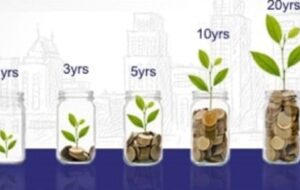Systematic investment plans could be a beneficial opportunity for beginner investors to start their investment journey. Instead of investing a larger amount of money, you can start by investing smaller amounts of money each month to slowly build your corpus. This factor could help beginner investors in many ways. To begin with, since the amount of money invested in the beginning is smaller, you have leeway even if you have invested in the wrong fund as you have time to switch.
But keeping a few things in mind when you invest for the first time can help generate higher returns. Below are five such key pointers.
Proper goal setting
A successful investment needs a proper goal. Without a goal, the choice of an investment may become unclear. Let us take an example to understand this more clearly. Let us suppose you are trying to create a retirement fund. You have a set goal here. That means you know that you should look for a longer-term investment option. But what will be your investment tenure if you don’t have a goal? This situation may lead to unclear or cloudy judgements. Hence, make sure you have a goal in mind before you begin to invest.
Invest in funds that beat inflation
Inflation is something that may eat into your SIP returns. It is a phenomenon where your money’s purchasing power decreases. For instance, what Rs.100 you today could not be the same next year. Hence, you should consider inflation when choosing a fund to invest in. Ideally, the fund should comfortably beat inflation. In a lot of cases, your net returns are considered the total returns subtracted by the inflation rate.
To make sure you stay on top here, monitor the inflation rate and the growth rate of your fund throughout the tenure of your investment.
Mind the risks of your investments
Mutual fund investments come with their sets of risks, especially since there is market linkage. The amount of risk that each fund carries may be different according to the fund’s features and portfolio choices. For instance, a fund that carries more equities in its portfolio may have a higher risk compared to one that doesn’t. Here, choosing a fund that has the right level of risk becomes important. For this, you may first have to your risk appetite by talking to an investment expert.
Choose the right fund
Once you have the goal and risk appetite figured out, you have to choose the right fund as well. Now, the right fund is subjective. What works for you may not work for another investor, The best course of action is to choose a fund according to your goal. For instance, if your goal is to build an emergency fund, you may choose a fund that doesn’t have a lock-in period since liquidity is of high importance. Similarly, if you are doing retirement planning, you may choose a fund that is meant for the longer term.
Make sure you diversify
The saying ‘don’t put all your eggs in one basket is valid when it comes to investments. Hence, you should diversify your investments. Diversification can ensure that your portfolio is designed to grow and, at the same time, protect your corpus. You can diversify SIP investments by investing in multiple funds that have distinct characters. But ensure all the funds you choose are in match your investment horizon.
SIPs can be a beneficial investment option if you invest right. Follow the above pointers to make sure you get the best out of it.




